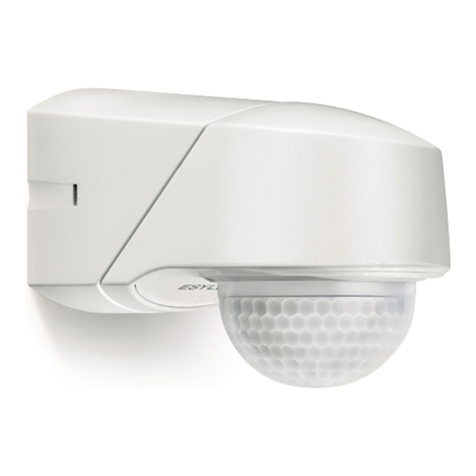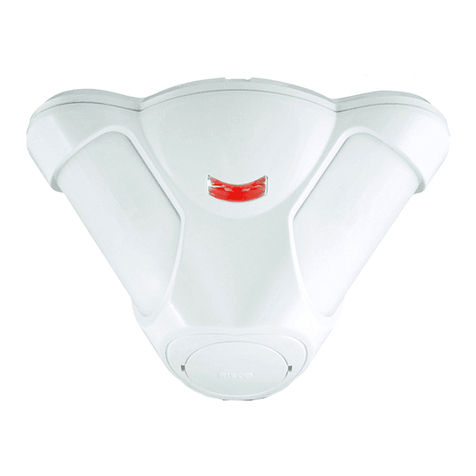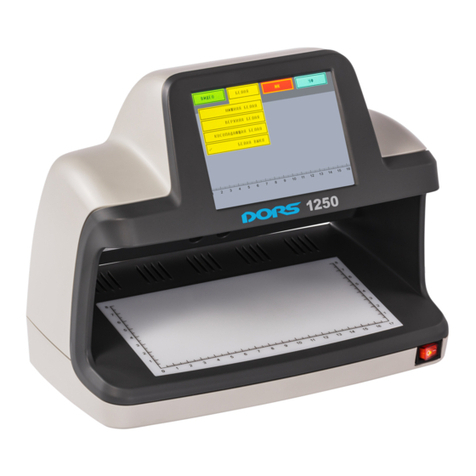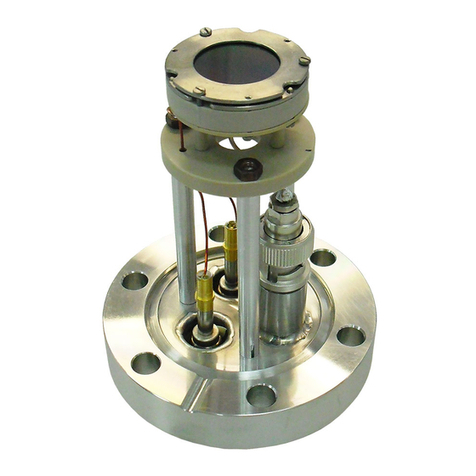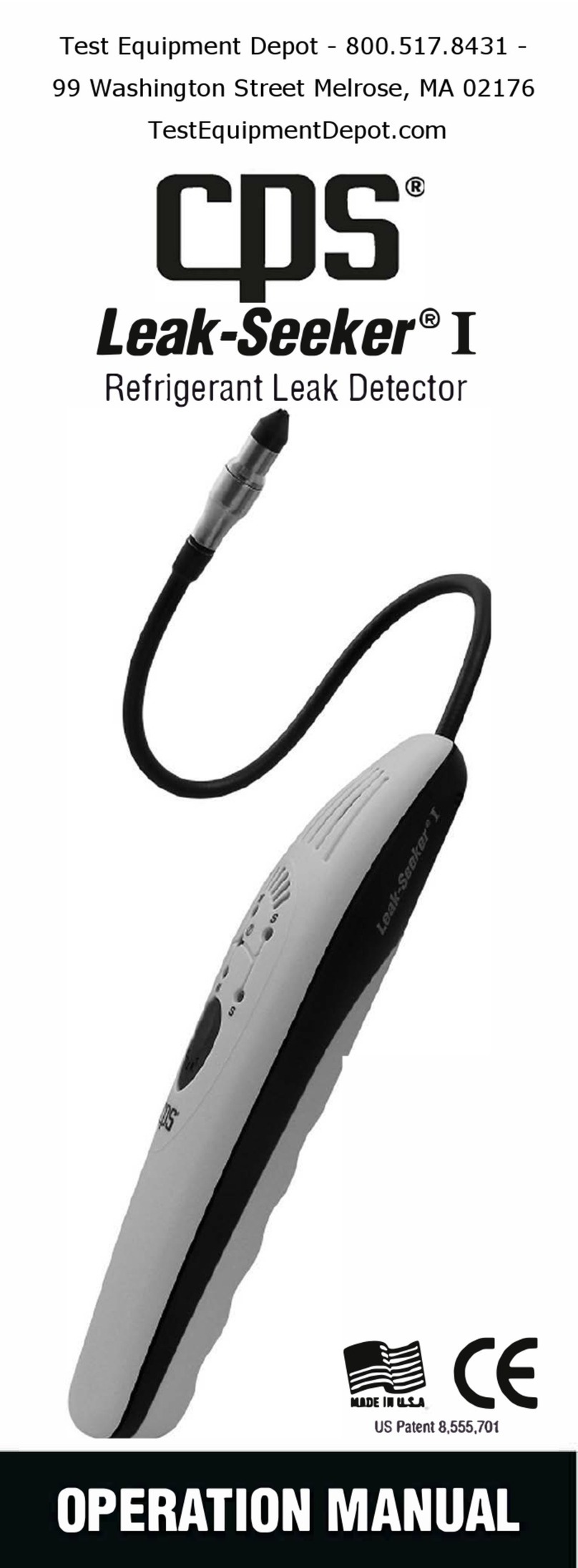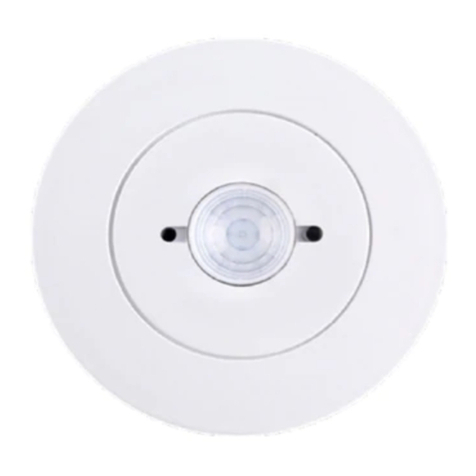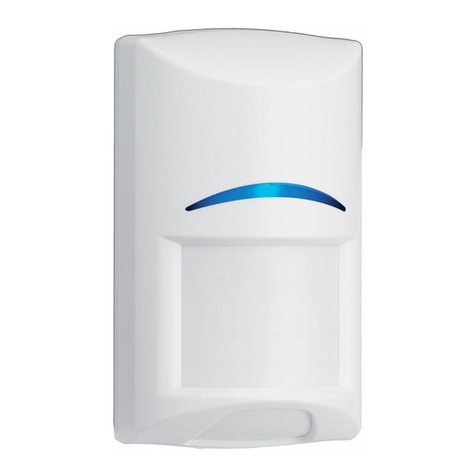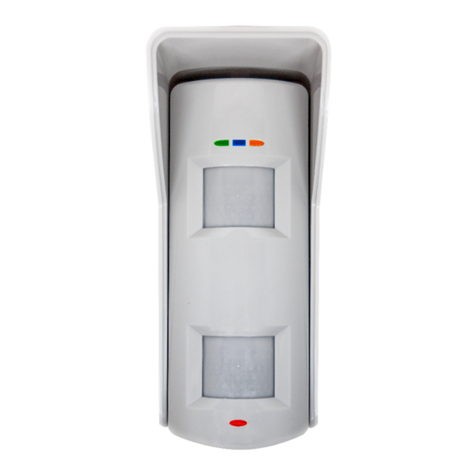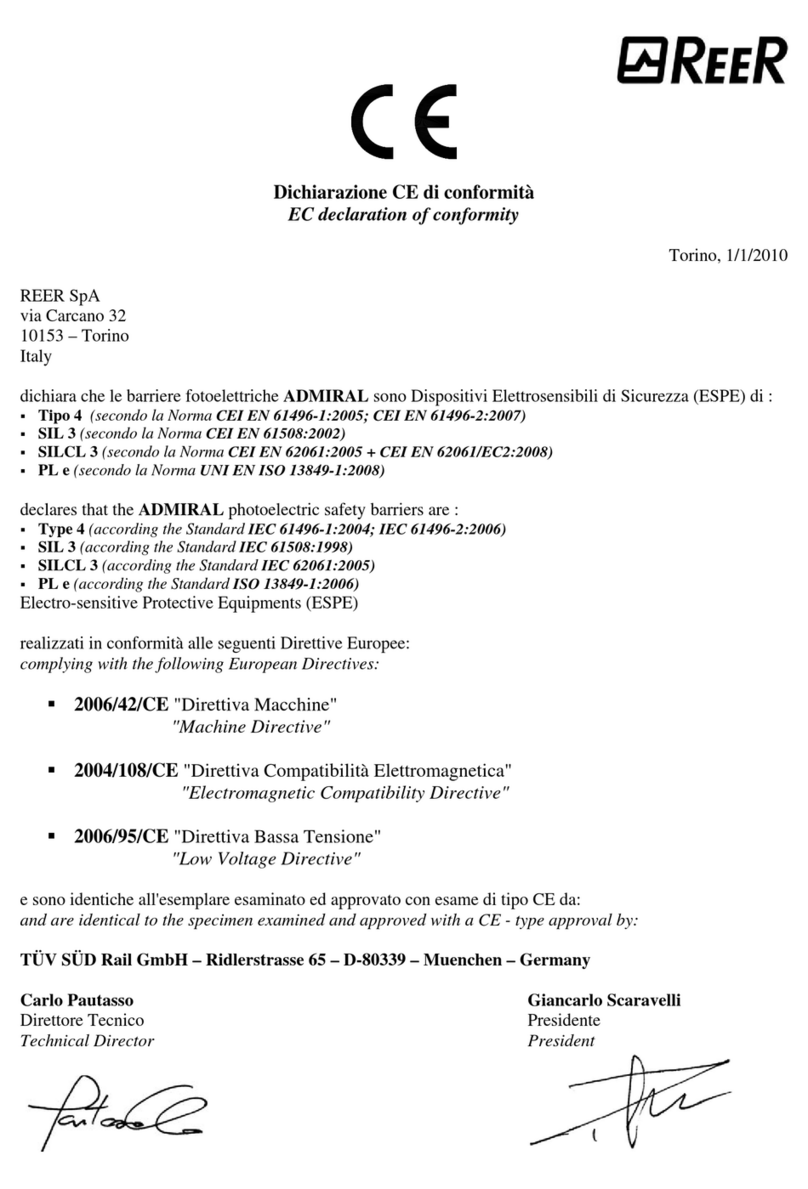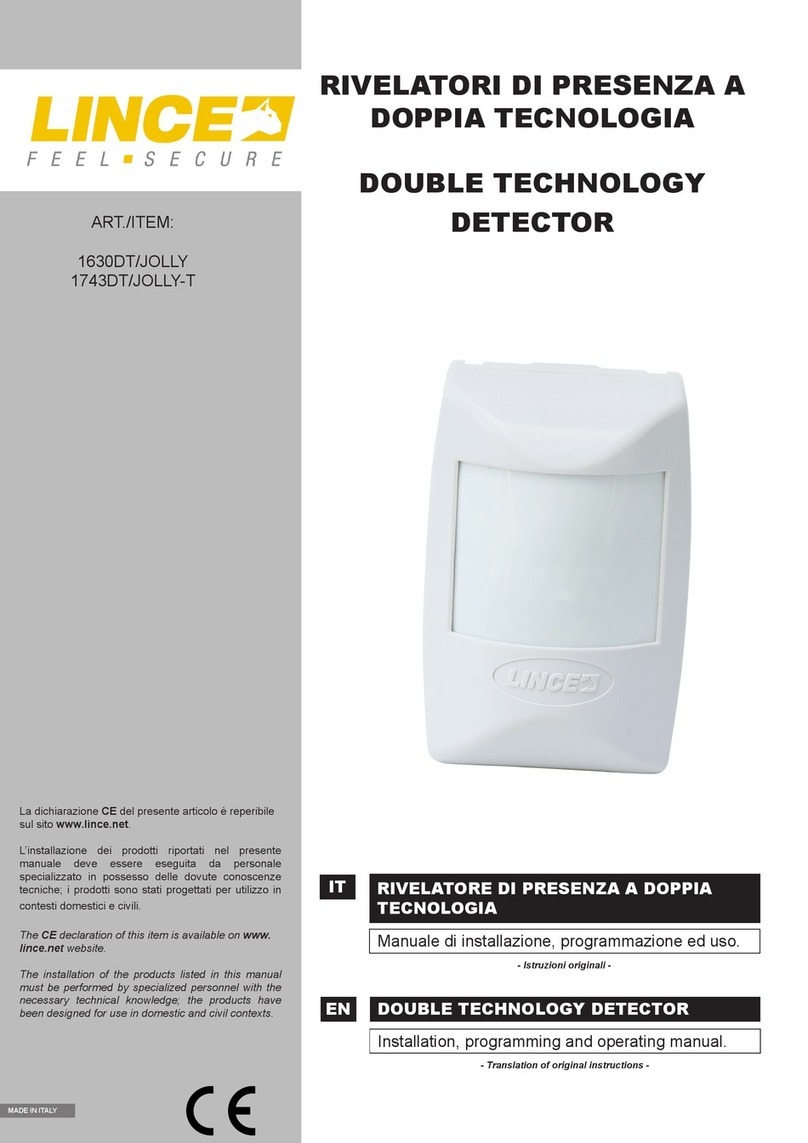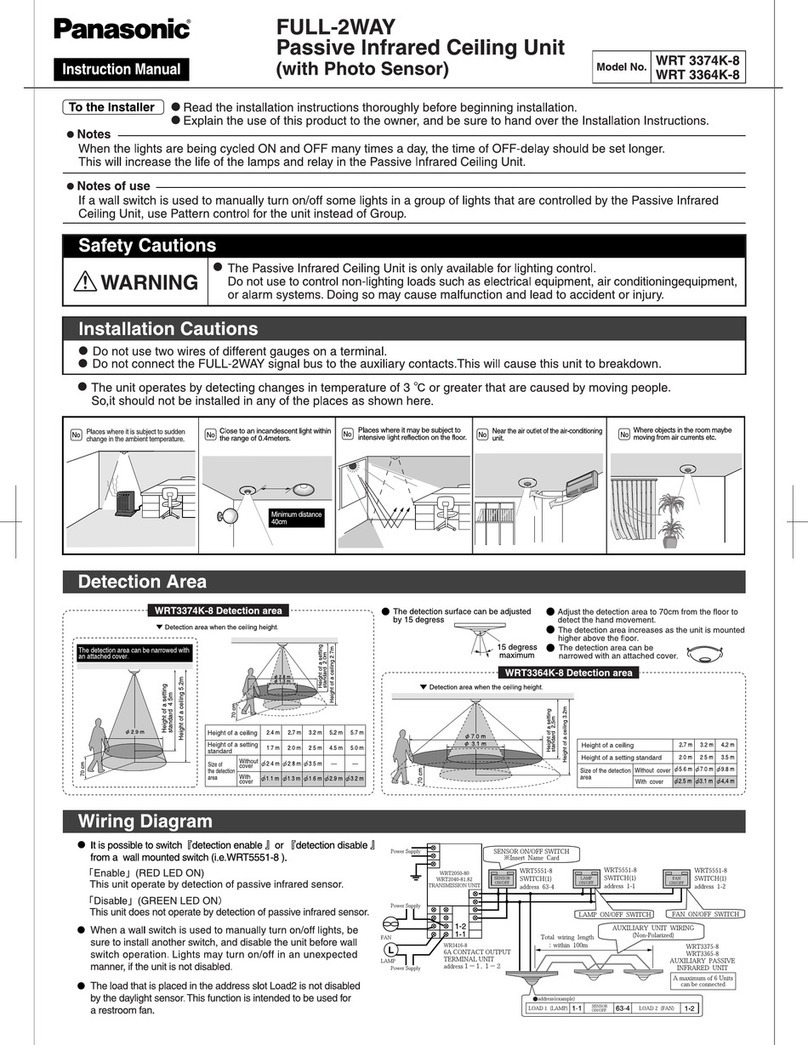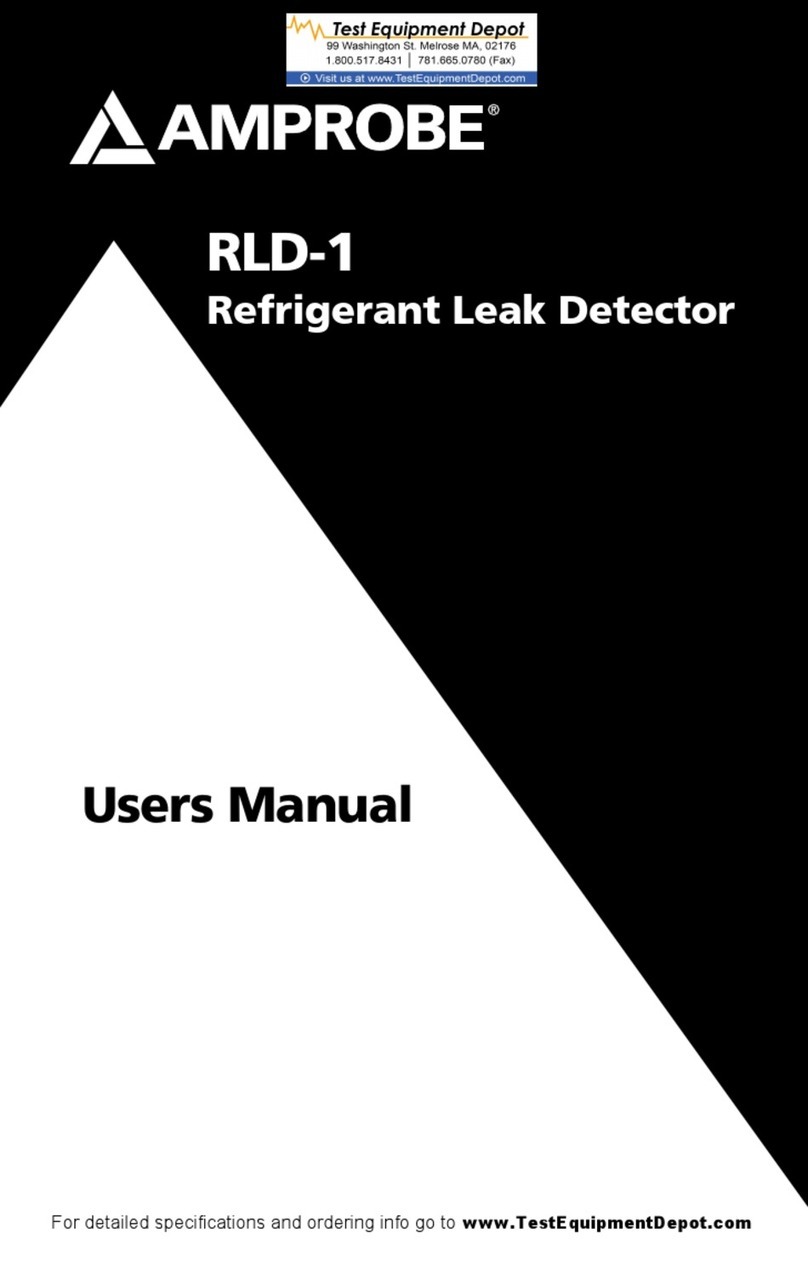Innohome Stove Guard SGK430 User manual

STOVE GUARD SGK430
REFERENCE MANUAL
For installers and end-users

2 3
Thank you for choosing
Innohome SGK430 Stove Guard.
Before using this product, please read
‘safety instructions’ rst.
The manual and the user guide are an integral
part of the product and contain important
information about use and handling. Ensure
that the manual is left with the end-user for
future reference.
Package contents:
• Intelligent Heat Sensor SGS530
• Control Unit SGC430-U3-35 or SGC430-U4-35
• Installation manual
• Guide for User
• Reference manual
• Cupboard sticker
1. Safety instructions 4
2. Frequently Asked Questions 5
3. Settings 8
3.1. Increasing/decreasing Heat Sensor sensitivity level 8
3.2. Returning sensitivity level to factory setting 10
3.3. Pairing of devices 10
3.4. Silent alarm 11
4. Low battery alarm 13
5. Applied standards 13
6. Warranty 14
7. Technical specications 14
Contents

4 5
The Stove Guard does not cover all possible hazardous situations
but signicantly increases the safety of a range. Never leave the
range unattended on purpose.
Indoor use only.
Not suitable for use in professional kitchens.
Do not leave the range unattended after resetting the pre-alarm
signal.
Ensure a minimum distance of 6’’(15cm) between you and an
intelligent heat sensor in full alarm, due to risk of damage to hearing.
Do not leave small children unsupervised with the product, its parts
or packaging, due to risk of swallowing small parts.
Do not disassemble.
Do not immerse the Intelligent Heat Sensor in water.
The Stove Guard alarm is not triggered if the hob’s temperature is
too low for a hazardous situation to be identied, or if the range
automatically limits a temperature increase.
The Stove Guard does not cut all phases when turning o the range:
it should never be used to switch o range electricity for range
servicing/repair procedures.
Disconnect power during installation.
Opening the Control Unit voids warranty.
Batteries
Do not short-circuit or charge batteries, due to risk explosion.
Do not attempt to open or burn batteries due to risk of explosion.
1. Safety Instructions
1. I cannot turn the range on and the Control Unit is emitting a ring every 5 seconds.
• The range has been locked due to several concurrent maximum temperature
alarms. Unlock the range by turning the electricity to the range o for 15 seconds,
using the range fuse (on the main electricity board).
2. I cannot turn the range on, and no signal sounds from the Stove Guard
• The Sensor has been removed from its mounting plate or it is not placed on it
correctly. The LED on the side of the Heat Sensor should face towards the user (see
image 2 in the Installation manual sheet). Check that the Sensor ts tightly on the
mounting plate with no gaps.
• If the Sensor is placed on its mounting plate correctly, the Control Unit overheating
protection has turned the Control Unit and the range o. The range can be turned
back on by turning the electricity o for a moment using the range fuse (on the
main electricity board). If the overheating protection turns the range o again, the
range is getting overheated due to a fault in the range or for another reason not
dependent on the Stove Guard. Have the range checked by a qualied electrician.
3. The fault diagnosis alarm (Control Unit: a short ring and a long ring, alternating
at 5 second intervals) did not reset by pressing the Heat Sensor cover once.
•
The fault diagnosis alarm can be triggered by the Heat Sensor not being on its
mounting plate, it being placed the wrong way round, or if dirt or fat is covering
its sensors. It can also be triggered by a problem in the radio connection or in the
functioning of some part of the system.
•
Ensure that the Heat Sensor ts tightly on its mounting plate with no gaps, and that
it is placed the right way round (see image 2 in the Installation manual sheet). Clean
the Heat Sensor by wiping it with a cloth dampened with a mixture of household
detergent and water. Only use a cloth that does not leave bres.
•
Reset the alarm by turning the electricity o for 15 seconds using the range fuse (on
the main electricity board).
•
If the fault diagnosis turns the range o again, contact the product retailer
. A range
that is constantly turned o by the fault diagnosis, can only be used for 5 minutes at a
time, by switching the electricity o for 15 seconds in the above mentioned way.
4. I accidentally reset the pre-alarm signal even though the alarm was triggered
by a hazardous situation. Has the Intelligent Heat Sensor now become too
insensitive?
• Resetting the pre-alarm signal changes the Intelligent Heat Sensor’s sensitivity
but only to such a small extent, that resetting it a couple of times does not cause
insensitivity.
2. Frequently Asked Questions

6 7
5. The Stove Guard alarm triggers during normal cooking
• The alarm sensitivity has a learning component - pressing the Sensor cover during
pre-alarm signal adjusts Sensor sensitivity (see Guide for User). However, if this
has been done a couple of times and the alarm still triggers in a similar cooking
situation, see below.
• The Heat Sensor may interpret placing a hot oven tray on the range or removing a
pot from a hot hotplate as a hazardous situation and signal a short alarm.
• A stove-top coee maker or a pot that is much smaller than the hotplate can
continuously trigger the Stove Guard alarm. The alarm can also trigger more easily
if a pot is used without a lid.
• It is recommended to use a pot/pan that ts the hotplate, and to use a lid when
possible. To use a stove-top coee maker, see question 6.
• If the Stove Guard alarm still triggers in situations not mentioned above, adjust the
Intelligent Heat Sensor sensitivity manually, see chapter 3.1 in this manual.
6. The Stove Guard alarm triggers when I make coee with a stove-top
coee maker.
• Stove-top coee makers are often much smaller than the hotplate, hence the Stove
Guard cannot distinguish it from a risk situation. This is usually a problem with the
smaller coee makers, and with ones that take a longer time to make the coee.
• To carry on using a stove-top coee maker, we recommend using a larger model
covering more of the hotplate (perhaps only making half a portion each time),
and/or getting a dierent model.
• If you however wish to use the existing stove-top coee maker, the Stove Guard
alarm can be reset when it triggers during making coee. This does not cause
changes in the Heat Sensor sensitivity (the coee maker triggers the non-learning
maximum temperature alarm).
7. The Stove Guard alarm did not trigger in a hazardous situation
• It is possible that the temperature in the situation was not yet high enough to
be identied as a risk situation. The Heat Sensor needs to take dierent cooking
scenarios into account, including frying at high temperatures, and not trigger too
easily. Hence, the alarm is triggered only when a certain temperature (or rate of
increase) is reached, still long before the ignition of a re. However, it is important
to double check the Stove Guard operation with the following procedures (see the
next points).
•
Check that the Intelligent Heat Sensor is installed correctly by double checking
the points mentioned in the installation manual sheet (also available online at
www.innohome.com).
• If the Sensor is installed correctly, turn on a hotplate and do a test alarm by
pressing the Sensor cover until the Sensor emits a beep. Check that the Control
Unit turns the range o. If the test alarm does not succeed, contact the product
retailer.
• It is possible to change the Sensor’s sensitivity so that it reacts earlier (increase by
one or two levels, see chapter 3.1 in this manual).
8. What to do when replacing the Intelligent Heat Sensor or the Control Unit with
a new one?
• See chapter 3.3 in this manual for device pairing instructions.
9. What to do when changing the range to a new one/moving house?
• First return the Heat Sensor sensitivity level to its factory settings (see chapter 3.2).
Then install the Stove Guard as for rst installation. The installation manual sheet
can be found at www.innohome.com.

8 9
3.1. Increasing/decreasing Heat Sensor sensitivity level
The sensitivity can be set to levels between 3 and 8, after which it
adjusts to the cooking habits, and can move up to level 15.
First check the current sensitivity level as instructed below.
1. Checking the current sensitivity level
• Detach the Intelligent Heat Sensor. (Wait until the Sensor emits four beeps and the
cooker is turned o.)
•
Press and hold the Heat Sensor cover. Wait until you have heard two beeps, then
release the cover.
•
Wait for a moment until the Heat Sensor starts to emit beeps to conrm its
sensitivity setting. The beeps are emitted in four (4) sequences. Listen to the 1st, 2nd
and 4th sequence and note them down with a pencil.
2. Set the new sensitivity level
To increase sensitivity, set the sensitivity level to match the smallest number - in the
example above, it would be set to ”4”). (If all the three sequences are the same, for example
4 – 4 – x – 4, then set the sensitivity level one step downwards from this number. In this
example, the level would be set to ”3”. )
1.
3.
3. Settings
4.
The Intelligent Heat Sensor conrms its new sensitivity level with beeps (eg. 7
beeps = level 7). If the level was not correct carry out the procedure again.
.
Beeps Sensitivity level
3 3
4 4
......
15 15
3.2. Returning sensitivity level to factory setting
1. Detach the Intelligent Heat Sensor. (Wait
until the Sensor emits four beeps and the
range is turned o.)
2. Put the battery disconnection piece into
the hole on the bottom surface of the
Sensor (see image 1). Hold the Sensor in
your hand and press the disconnection
piece and the cover towards each other,
hold for at least 5 seconds.
3. Release the hold (the Sensor emits a
beep). Remove the battery disconnection
piece and save it for possible later use.
4. Press the Sensor cover and hold it down
until you have heard three separate
beeps.
Image 1
As an example, the beeps could be
5 – 4 – x - 4
To decrease sensitivity, set the sensitivity level one step upwards from the smallest
number (in the example above, since the smallest number is ”4”, the sensitivity level would
be set to ”5”).
For video instructions, scan QR
or go to https://goo.gl/wgdjNr
For video instructions, scan QR
or go to https://goo.gl/eS3oZF
Press and hold the Heat Sensor cover. Wait until you have heard two beeps, then
release the cover.
2. Now set the sensitivity level by pressing the Heat Sensor cover at one second
intervals (eg. 7 presses = level 7).
Return the Heat Sensor to the mounting plate and press its cover once.

10 11
5. Return the Heat Sensor to its place and
press its cover once.
If you have lost the battery disconnection
piece, you can alternatively use a screwdriver
to carefully press the button on the bottom
surface of the Sensor (see image 2).
3.3. Pairing of devices
If the Control Unit is hard to access, use the pairing method B.
Method A
1. Turn the range electricity o for 15 seconds, using the range fuse (in the main
electricity board).
2. Turn the electricity on.
3. Within one minute, touch the right side of the Control Unit with one of the Heat
Sensor’s round magnets and wait until the Control Unit emits a ring.
4. Within one minute, return the Heat Sensor on to its mounting plate and press its
cover until the Sensor emits a beep. The Control Unit turns the range o and the
Sensor emits a test alarm. Reset the test alarm by pressing the Sensor cover once.
Image 2
Method B
(The Heat Sensor should be placed on its mounting plate.)
1. Turn o range electricity for 15 seconds, using the range fuse (on the main
electricity board).
2. Turn the electricity on for 5 seconds, then turn o again for 15 seconds.
3. Turn the electricity back on, wait for 20 seconds, then press the Sensor cover until
the Sensor emits a beep. The Control Unit turns the range o and the Sensor emits a
test alarm. Reset the test alarm by pressing the Sensor cover once.
3.4. Silent alarm
The Heat Sensor alarm signal can be turned o for users that nd it disturbing.
Since the user will not notice the Heat Sensor pre-alarm signal and therefore will not
be able to use the learning sensitivity feature, it is recommended to decrease Heat
Sensor’s sensitivity by one level, see chapter 3.1.
Procedure:
Open the cover (see‘Opening and closing the Intelligent Heat Sensor cover’, on
next page). Turn the DIP switch 2 to‘o’ position (see image 3 – the image shows
the switch in ‘on’position). Place the cover back according to instructions.
Be careful not to move DIP switch 1.
Image 3
1
2

12 13
The Intelligent Heat Sensor is powered by solar panels and batteries. The working life
of the Sensor is on average 10 years, based on the number of alarms. The batteries are
xed and cannot be changed.
The battery alarm starts for at least 1 – 2 months (depending on the amount of light)
before the batteries run out. It is however recommended to immediately change the
Intelligent Heat Sensor, since if the batteries run out, the range can only be used
for 5 minutes at a time, until a new Heat Sensor is installed.
The battery alarm can be postponed for 12 hours by pressing the Heat Sensor
cover once.
If the Intelligent Heat Sensor batteries have run out
The range is turned o. To activate 5 minute cooking time, and to reset the Control
Unit battery signal, turn the electricity o for 15 seconds using range fuse (on the main
electricity board).
When the Sensor is at the end of its working life, please take care to recycle the old Sensor
appropriately, see the next chapter.
FCC Rule Part: 15.231:2015 (Periodic operation in the band 40.66-40.70 MHz and
above 70 MHz)
IC Rule Part: RSS-210 Issue 8, 2010 and RSS-GEN Issue 4, 2014.
UL 60730-1 AUTOMATIC ELECTRICAL CONTROLS FOR HOUSEHOLD AND SIMILAR USE -
PART 1: GENERAL REQUIREMENTS - Edition 4 - Revision Date 2014/05/21
UL 60730-2-9 STANDARD FOR AUTOMATIC ELECTRICAL CONTROLS FOR HOUSEHOLD
AND SIMILAR USE - PART 2-9: PARTICULAR REQUIREMENTS FOR TEMPERATURE SENSING
CONTROLS - Edition 3 - Revision Date 2013/08/16
CSA E60730-1:13 AUTOMATIC ELECTRICAL CONTROLS FOR HOUSEHOLD AND SIMILAR
USE - PART 1: GENERAL REQUIREMENTS - Edition 4 - Issue Date 2013/03/01
CSA E60730-2-9 AUTOMATIC ELECTRICAL CONTROLS FOR HOUSEHOLD AND SIMILAR
USE - PART 2-9: PARTICULAR REQUIREMENTS FOR TEMPERATURE SENSING CONTROLS -
Edition 3 - Issue Date 2015/09/01
4. Low battery alarm
5. Applied standards
Opening and closing the Intelligent Heat Sensor cover
• Use the tip of a screwdriver to carefully detach the cover, one end at a time
(image 4).
• To put the cover back, put both ends
in at the same time.
• Make sure that the black round sensor
goes through the opening in the cover
(image 5).
Image 5
Image 4

14 15
This product has a 2 year manufacturer’s warranty that covers defects in material or
workmanship, starting from the date of purchase. This warranty does not aect your
legal rights. The warranty covers use of the product in normal conditions in private
households and shared housing. The warranty is limited to the replacement or repair of
faulty components. The warranty includes batteries in normal private household use.
The warranty applies only when the product is used according to instructions. It does
not cover damage arising from misuse, improper handling, while in transit, application
of force, dust, dirt, water or other environmental factors, defects due to causes beyond
control such as lightning, abnormal voltage, acts of God.
In case of a warranty claim, please contact the vendor for instructions. Only authorised
returns with a full description of the fault are accepted. After the warranty period,
repairs may be charged and are not always possible.
Warranty claims do not extend the original warranty period and the warranty of the
replacement parts expires with the warranty of the product. Unless there is a statutory
obligation, the manufacturer is not responsible for further claims, including personal
or material damages, arising from the use of the product or from non-functioning or
mis-functioning of the product.
6. Warranty
Features
•
temperatures (self-learning maximum
temperature and rate of temperature
increase) (patent pending)
• Sensor Dislocation Alarm
• Fault diagnosis (patent pending)
•
Range ‘emergency use’inafault situationfor 5 min
• 15 adjustable sensitivity levels (learning)
(patent pending)
• Pre-alarm signal prior to cutting the power
• Manual alarm reset
• Audible alarm signal min. 65dB(A), max.
80dB(A) @ 40” ft (1 m)
• Silent alarm
• Alarm light
•
Sensing distance (from the range top)
18’’ – 40’’ (45 - 100 cm) hood installation,
26’’ - 32” (65 - 80 cm) wall installation
Maximum rated current (A): 35 A
Rated voltage or rated voltage range in volts: 250 V for SGC430-U3-35 and SGC430-U4-35
Nature of supply: AC
Purpose of control: Operating control
Construction of control: Independently mounted control
The type of load controlled by each circuit: Resistive
Degree of protection by enclosure:
Open type
Operating ambient temperature: 0 °C to 40 °C
against electric shock:
Class I equipment
Number of automatic cycles (A) for each
automatic action:
100 000 cycles
Method of mounting controls: Surface mounting
Method of attachment for non-detachable cords:
Type Y
Intended transportation condition of control: -10 °C to 55 °C
Additional features of Type 1 or Type 2 actions: Type 1.B
Control pollution degree: 2
Rated impulse voltage: 2500 V
Patents pending
Control Unit SGC430-U3-35 or
SGC430-U4-35
• SGC430-U3-35: NEMA 10-50P/R, 35 A, 250 V~
X, Y, W
• SGC430-U4-35: NEMA 14-50P/R, 35 A, 250 V~
X, Y, W, G
Intelligent Heat Sensor SGS530
• Wireless 315 MHz/10mW RF
• Audible alarm max. 80 dB(A) @ 40’’(1 m)
• Battery powered with long battery
No external power needed.

16
www.innohome.com
SGK430-ReferenceManual-US-revE-ver1
Table of contents
